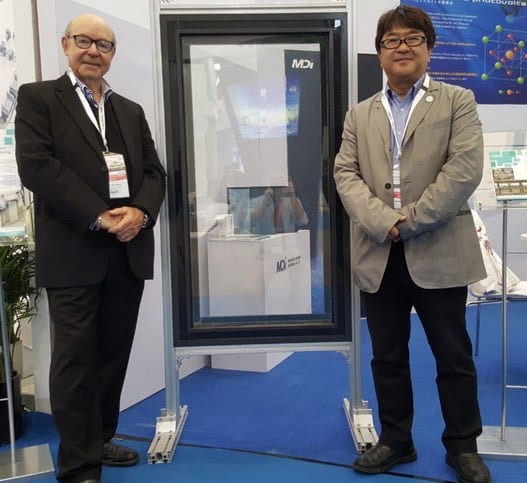Perth-based building-integrated solar PV company, ClearVue Technologies, is gearing up to sell its solar energy harvesting clear glass windows around the world, starting with the company’s impending float on the national stock market.
The company, which has developed the technology in conjunction with the Electron Science Research Institute (ESRI) at Edith Cowan University, is hoping to raise up to $A6 million in an initial public offering (IPO) on the Australian Stock Exchange, launched on March 6.
The goal is to sell 25 million shares at $A0.20c a piece, and a further 5 million shares to cover over-subscriptions. The closing date for the IPO is April 6, with trading on the ASX set to begin on April 25.
The concept of BIPV is nothing new – although it is yet to really make its mark on the global renewables market.
A number of research institutions and companies – including Australia’s own Dyesol – have been working away at low-cost, commercially viable BIPV solutions, including printable perovskite solar cells.
And Tesla’s Elon Musk is also in on the game, with his solar roofing tiles – although production and installation of these has been delayed, and questions linger over their cost and efficiency.

ClearVue’s patented nano technology differs from others in that it generates electricity from a flat, clear sheet of glass while maintaining transparency – a quality the company’s executive chairman, Victor Rosenberg, has described as a game-changer.
“Nobody actually has got clear glass,” he said in comments in March last year. “They’ve got either lines or they’ve got dots, or looks like a chessboard with squares of solar panels on the glass.
“We are today, I would proudly say, the only commercial-size clear glass super building material producer.
“Our technology presents a paradigm shift in the way glass will be used in building construction, automobiles, agriculture and speciality products,” Rosenberg said in a statement this week.
“Glass will no longer be just a component of construction but also a renewable energy resource.”
As the company’s website explains it, the technology uses a special “spectral filter” film that allows around 70 per cent of natural light to pass through the window.
Meanwhile, around 90 per cent of UV and infrared rays are blocked, or reflected by “inorganic nanoparticles” to the edges of the glass, where they are collected by PV cells that produce electricity.
The company says the windows can currently generate a minimum of 30W per square metre, while also providing insulation from heat and cold, and UV control. With further R&D, they expect generation to reach 50W per square metre.
According to Rosenberg, the company is currently at the pre-development stage, with production of expected to begin within the next two months.
It plans to initally target customers in the agricultural and greenhouse sectors and in the building and construction industries. It is even working on a prototype greenhouse that has the ability to generate its own energy for desalination and lighting.
“Some of our major milestones have been in January 2018,” he told Finance News Network.
“We’ve just signed a collaboration and research agreement with Nanyang Technological University in Singapore, as well as a university in Jerusalem. And they will be working on a research leading towards the printing of solar cells,” he said.
The company also has a manufacturing partner in China called ROCKY Glass, which will be making the windows initially, Rosenberg said, with ClearVue looking to licence the product throughout the world.











